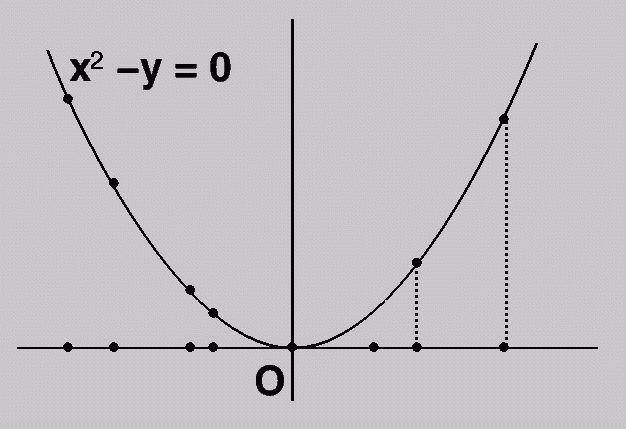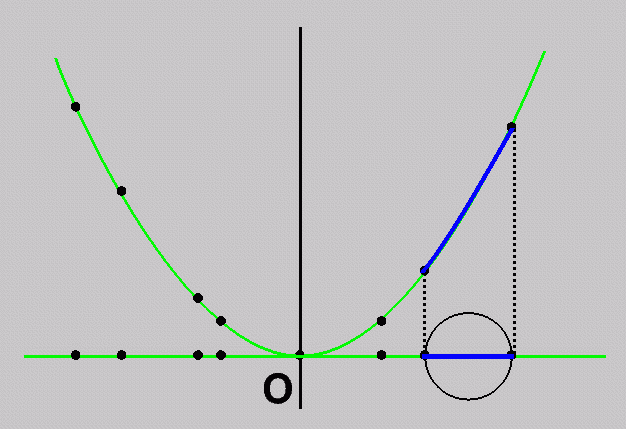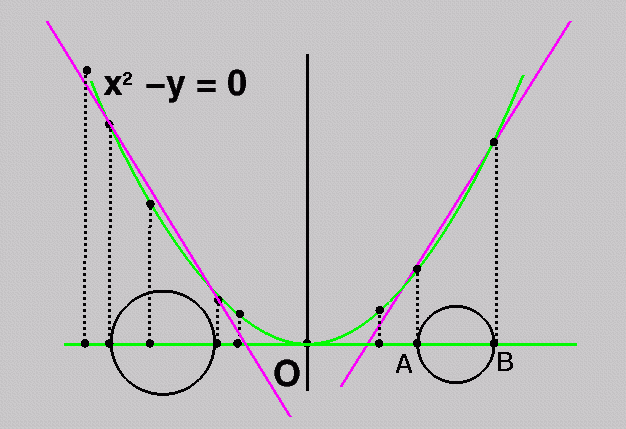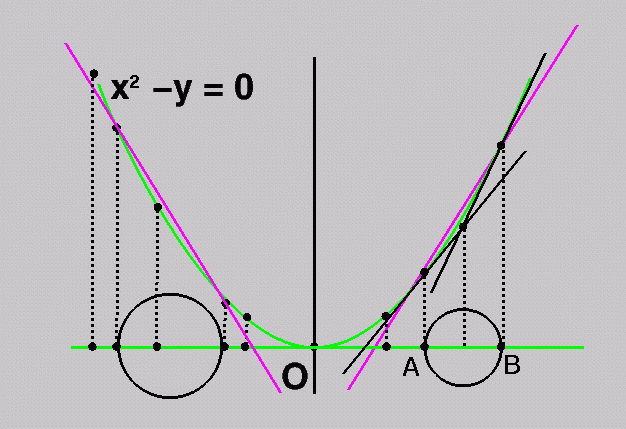
Announcement: Felice Frankel speaks at 4pm in 34-101 !
Introductory Remarks:
This course is about tools and tool-building. One
issue that comes up
frequently in geometric computation is this: when
faced with a new
problem, can an existing tool be re-used, or must a new
tool always
be built from scratch?
Today, we will discuss methods for transforming new problems
into
problems that we know how to solve. There are two
parts to this:
finding a useful relationship between problem statements,
and
devising efficient algorithms to transform between them.
We'll
cover these in opposite order.
This effectively expands our repertoire of tools, without a lot of extra work.
Presenters:
A Lifting transformation:
d-dimensional voronoi diagrams
to (d+1)-dimensional convex
(lower) hulls.

Wish to compute a Voronoi
diagram in d dimensions. Input
is n points. Example:
d == 1 (shown).
We will show (from P&S
Section 6.3) a lifting transformation
that maps d-dim Voronoi
Diagrams to (d+1)-dim lower hulls.
First, lift the real line
(and thus the set of sites) onto a parabola
as shown above.

Notice the destination of:
the
real line (green)
the
discrete sites (black)
the
portion of the line between two sites (blue)
(what is the black circle?)

Now for any two sites, construct
the chord through their lifted
positions (magenta).
This chord meets the parabola
in exactly two points (why?).
Thus is partitions the
parabola into an interior and exterior
portion -- exactly the
lifting of the portion of the line between
the generating sites.
Notice that these portions lie on opposite
sides of the chord
in the plane.
Now look at the chord and
its relation to the other (n-2) lifted
sites. When will
the chord support an edge of the lower hull
of the lifted sites?

The only way for a lifted
site C to lie "outside" the chord is
if the generator (unlifted)
site lay "inside" the circumcircle
of the generator sites
A and B.
Thus the structure of a
Voronoi diagram of n sites in d
dimensions -- that is,
a set of empty circles centered on
Voronoi vertices, each
passing through d sites, is exactly
that of the convex hull
of the same n sites lifted onto a
paraboloid in (d+1) dimensions.
More neat things:
this works in any dimension (show d=2,3),
and it works for an arbitrarily
translated paraboloid!
Readings:
Last Meeting .... Next
Meeting .... Course
Page .... Meeting Schedule
Created: Feb 1998
Prof. Seth Teller, MIT Computer Graphics Group, teller@graphics.lcs.mit.edu